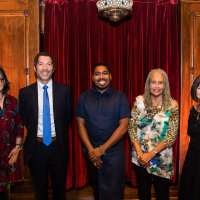It was not until I read the latest issue of the Wolf-Brown consulting firm’s newsletter that I encountered the concept of “renting an audience.” But according to Matt Lehrman, executive director of Alliance for Audience of Phoenix, this is what so many arts organizations are trying to do when they use advertising to attract new audiences of one fragmented demographic or another.
Conventional wisdom has it that audiences born between 1946 and 1955 participate more heavily in the arts that do those people born later, and that these people are aging (surprise!) and unless we (who?) do something about it, the audience for the arts will be dead with the demise of the last baby boomer on the planet.
The latest research conducted for the National Endowment for the Arts shows that, while indeed the arts’ largest audience segment is aging, the numbers of the combined early and late boomers (1946-1965) will increase from 12 to 19 percent of the population by 2050. This could be a significant marketing opportunity for the arts, provided there are strategies and opportunities that are effective in reaching these individuals.
I am of the view that we’ve pretty much lost a generation or two of potential arts audiences following the boomer generation, when we foolishly let the arts be marginalized then eliminated from children’s education after Sputnik went up. We may never get these audiences back, and arts organizations may be running against a brick wall in trying to devise strategies to attract them.
In the Wolf-Brown newsletter, three seasoned arts executives* offered the following thoughts about developing audiences among both the boomer generation and the “20-somethings” in the near term:
* Matt Lehrman, as noted; Ed Cambron, VP Marketing and Communications for the Philadelphia Orchestra; and Greg Sandow, arts critic, author and ArtsJournal blogger

